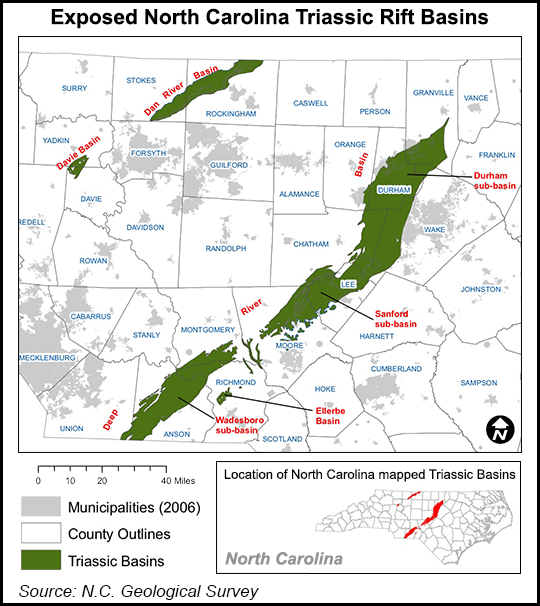North Carolina Schedules Final Public Hearings on Fracking
North Carolina regulators have scheduled a final series of public hearings to discuss a rulemaking on hydraulic fracturing (fracking), less than one year before a moratorium on the practice is to be officially lifted.

The state Mining and Energy Commission (MEC), a division of the North Carolina Department of Environment and Natural Resources (DENR), scheduled public hearings in Sanford on Friday, in Reidsville next Monday and in Cullowhee on Sept. 12. The first of the meetings was held in Raleigh on Wednesday.
The MEC is proposing to adopt 126 new rules and to repeal 10 others in order to create an appropriate regulatory program for oil and gas development in the state. The rules would modify existing oil and gas conservation law through the creation of 21 new or updated codes.
Those updates include terms of reference; administrative rules; variances; declaratory ruling; petition for rulemaking; rulemaking hearings; preemption hearing procedure; enforcement; civil penalties; exploration and geophysical surveys; drilling units and well spacing, and permitting.
Other sections are financial assurance; site infrastructure and construction standards; well construction and completion; chemical disclosure; environmental testing; water acquisition and management; oil or gas site exploration and production waste management; well site reclamation; and operation and production.
The MEC is required to adopt fracking rules by Jan. 1.
Republican Gov. Pat McCrory signed SB 786, also known as the Energy Modernization Act, on June 4 (see Shale Daily, June 5). The bill lifted a moratorium on fracking on July 1, 2015; extended the deadline for the state to develop its own regulatory program; created a new Oil and Gas Commission, and reconstituted the MEC (see Shale Daily, June 3; May 21; May 16; March 4, 2013).
Geologists with the North Carolina Geological Survey (NCGS), also part of DENR, are to collect rock samples in the western part of the state to test for oil and gas. The collections are to occur along the rights-of-way in seven counties — Cherokee, Clay, Graham, Macon, Haywood, Jackson and Swain — during the summer or in early fall.
North Carolina is home to the Deep River Basin, which the NCGS said is a 150-mile half-graben that traverses most of the central part of the state in a southwest-to-northeast direction. The basin is divided into three sub-basins — from north to south, the Durham, Sanford and Wadesboro sub-basins — each of which include about 7,000 feet of Triassic strata.
Another geologic feature, the Cumnock Formation, includes an interval of Upper Triassic (Carnian) organic-rich black shale, measuring about 800 feet in thickness. The shale covers about 25,000 acres at depths of less than 3,000 feet in the Sanford sub-basin, in Lee and Chatham counties.
In 2012, the U.S. Geological Survey (USGS) estimated that there was a 95% chance the Deep River Basin held 779 Bcf of natural gas and 35 million bbl of natural gas liquids (NGL), both of which were classified as undiscovered resources (see Shale Daily, June 21, 2012). USGS added there was a 50% chance the basin held 1.53 Tcf of gas and 75 million bbl of NGLs, and a 5% chance for 2.99 Tcf of gas and 158 million bbl of NGLs. The mean averages of the USGS estimates are 1.66 Tcf of gas and 83 million bbl of NGLs.
Last May, Terry Engelder, a geosciences professor at Pennsylvania State University, said USGS estimates for gas and NGLs in North Carolina were probably more accurate than previous estimates the agency made for the Marcellus Shale. He said that was because North Carolina sources are lacustrine rocks while the Marcellus is marine (see Shale Daily, May 23).
© 2024 Natural Gas Intelligence. All rights reserved.
ISSN © 2577-9877 | ISSN © 2158-8023 |
